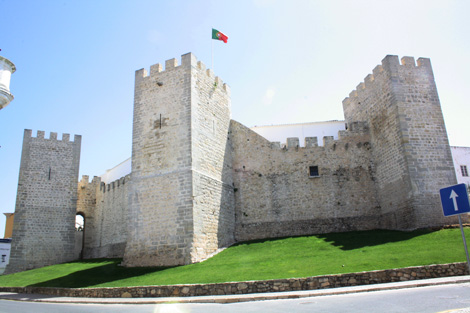 Its object is the culture and material and intangible heritage left by the Arabs in the Iberian Peninsula, but the idea is that it is also a way to stimulate the economy, attracting tourists. The Al-Mutamid cultural-tourist route was presented on Thursday in Loulé, one of the places through which this cross-border cultural itinerary will pass, starting in June.
Its object is the culture and material and intangible heritage left by the Arabs in the Iberian Peninsula, but the idea is that it is also a way to stimulate the economy, attracting tourists. The Al-Mutamid cultural-tourist route was presented on Thursday in Loulé, one of the places through which this cross-border cultural itinerary will pass, starting in June.
The first phase of the route, which will be partially implemented in the Algarve, was presented by the Regional Directorate of Culture of the Algarve, the national partner of this cross-border project and supported by European funds.
The entity took advantage of the World Day of Monuments and Sites to show, at Alcaidaria do Castelo, in Loulé, what this route will be like, whose inauguration is scheduled for the same city, in June, «during the MED Festival».
 Loulé is one of the Algarve towns that are official crossing points, like Aljezur, Sagres, Silves and Tavira. Faro and Albufeira, namely Paderne, despite not being official partners, will also be included in the route, due to the relevant Islamic heritage that their territory possessed and «provided information».
Loulé is one of the Algarve towns that are official crossing points, like Aljezur, Sagres, Silves and Tavira. Faro and Albufeira, namely Paderne, despite not being official partners, will also be included in the route, due to the relevant Islamic heritage that their territory possessed and «provided information».
The name chosen for the route refers to King Al-Mutamid, who was born in Beja and reigned in the Taifa of Seville between 1069 and 1091. A historical figure who linked both sides of the border, hence being chosen.
The Al-Mutamid Route literally places the Algarve on the map of European cultural routes, as the eight routes of the project led by the Andalusian public foundation «El Legado Andalusí» are part of the Great Cultural Itinerary of the Council of Europe “Rotas do Legado Andalusino ”.
These cultural-tourist routes «cross over 200 locations in the south of the Iberian Peninsula, in the territory that the Arabs called Al-Andaluz», according to the regional director of Culture of the Algarve Dália Paulo.
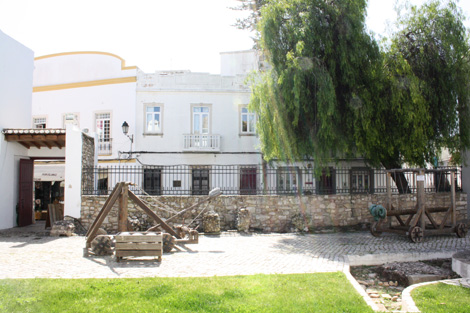 The project's focal point is the Spanish city of Cordoba, the seat of the ancient caliphate, but the main attraction is Granada, the last Islamic bastion on the Iberian Peninsula and a city that keeps much of this heritage alive.
The project's focal point is the Spanish city of Cordoba, the seat of the ancient caliphate, but the main attraction is Granada, the last Islamic bastion on the Iberian Peninsula and a city that keeps much of this heritage alive.
“Granada is the arrival point of all routes, which come from distant points of the old Al-Andaluz kingdom”, said Rui Parreira, from the Regional Directorate of Culture. The Al-Mutamid Route, in this first phase, will link Huelva to Aljezur, in a route with integrated contents.
This is the only route that will extend to Portuguese territory and, at a later stage, will go up to Lisbon and back south through Vendas Novas, Évora, Beja and Mértola, re-entering Spain to cross the Huelva mountains towards this city. of Andalusia. “It can be seen as a route with two routes or a circular route”, illustrated Rui Parreira.
The route will be supported by a guide book, the contents of which have even been developed by the «El Legado Andalusí» foundation, which will be complemented with an insert that will give directions to places to visit throughout the region, where to stay and where to eat, so to encourage those who take this route to discover not only the sites it crosses, but other places of cultural and environmental interest.
Loulé Museum will be the nerve center of the Al-Mutamid route in the city
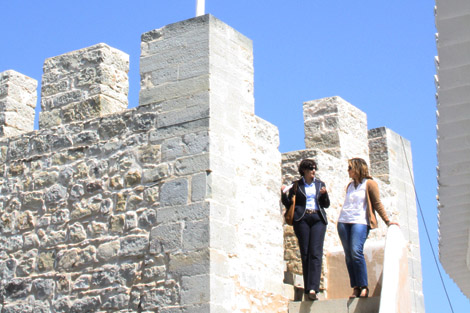 The Loulé Museum, which hosted the presentation of the Al Mutamid Route, will have three new exhibition spaces related to it, in the three towers of the castle that hosts it. Spaces that aim to “complement and not repeat” the knowledge that this archaeological museum already disseminates.
The Loulé Museum, which hosted the presentation of the Al Mutamid Route, will have three new exhibition spaces related to it, in the three towers of the castle that hosts it. Spaces that aim to “complement and not repeat” the knowledge that this archaeological museum already disseminates.
“The first tower will be a point of information, discovery and an invitation to the route. In other words, it is a room dedicated to the entire Islamic heritage that is on the Al-Mutamid Route. It is the general framework, but above all the invitation to leave for the territory», revealed Dália Paulo to Sul Informação, on the sidelines of the session.
«The second room is already dedicated to the place where we are, the city of Loulé and its importance in the regional context. This room will be complemented with a landscape reader, on the tower terrace, which will allow us, at the same time as we have it in front of us, to understand, visualize and take a walk back in time to understand where the sites in the Islamic city were . This one also takes us to the street», he added.
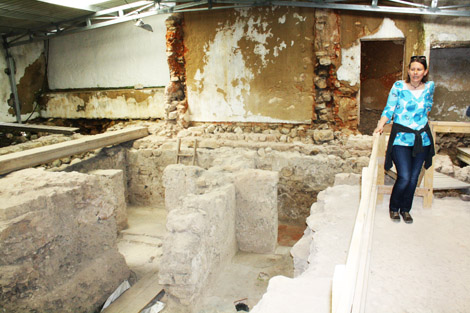 One of the places that will be part of the tour inside Loulé are the public baths, an archaeological site that is still being unveiled by technicians from the municipality. This site of interest was visited on Thursday, as part of the Day of Monuments and Sites, and was guaranteed by the local authority that, despite the fact that excavations are currently stopped, they will soon continue, to reveal more secrets of this heritage. from the past that, despite being buried (or because of it), is very well preserved.
One of the places that will be part of the tour inside Loulé are the public baths, an archaeological site that is still being unveiled by technicians from the municipality. This site of interest was visited on Thursday, as part of the Day of Monuments and Sites, and was guaranteed by the local authority that, despite the fact that excavations are currently stopped, they will soon continue, to reveal more secrets of this heritage. from the past that, despite being buried (or because of it), is very well preserved.
«The third room moves into the interior, into the Islamic daily life and into what we want to be valued as well, the link between the ancient and the contemporary, through the intangible heritage. It moves on to gastronomy, to flavors, to what the kitchen was and its rituals», describes, with passion, the regional director of Culture.
Despite this look at the interior of Islamic traditions and legacy, the idea is, equally, to lead people to discover the city, in this case "our current gastronomy".
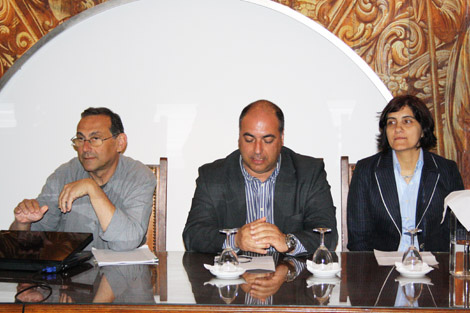 This challenge to go out into discovery is also intended to boost the economy. As illustrated by the cultural councilor of Loulé Joaquim Guerreiro, this route combines “education, heritage, tourism and culture”.
This challenge to go out into discovery is also intended to boost the economy. As illustrated by the cultural councilor of Loulé Joaquim Guerreiro, this route combines “education, heritage, tourism and culture”.
One of the great advantages that it brings, in the mayor's view, is the «gain of scale that alone we cannot achieve». «We are going to gain scale in the dissemination and tourist attraction of our city. Those who visit one of the points on the route will always be interested in getting to know the others», he considered.
Another advantage that may arise from the Al-Mutamid Route is that “new cultural-tourism products can be born, as in other regions, in the areas of entertainment and gastronomy”. “We have a very rich past. Due to the earthquake, we do not have much built heritage, but we do have the memory and some traces that can be valued», said Joaquim Guerreiro.

















Comments